Understanding the Ked Meaning - A Complete Guide
The ked meaning refers to a wingless, bloodsucking fly that parasitizes sheep and other livestock worldwide. Here's what you need to know:
Primary Definition:
- Scientific name: Melophagus ovinus
- Family: Hippoboscidae (louse flies)
- Common names: Sheep ked, sheep tick, sheep louse fly
- Size: 4-6 mm long, dark red color
- Habitat: Lives permanently on sheep, feeding on blood
Key Characteristics:
- Wingless external parasite
- Visible on sheep's neck and forelimbs
- Causes wool damage and skin irritation
- Vector for sheep trypanosomiasis disease
The word "ked" first appeared in English around 1560-70, originally as "cade," though its ultimate origin remains unknown. These small but significant parasites have plagued sheep farmers for centuries, causing both animal welfare issues and economic losses through damaged fleece quality.
Beyond livestock, ked also appears in other contexts - from the Danish word meaning "tired" to the medical acronym KED (Kendrick Extrication Device) used by emergency responders. However, the agricultural meaning dominates most discussions of this term.
As specialists at American Mortuary Coolers, we've spent years helping funeral professionals understand biological terminology and preservation needs. Our experience with mortuary equipment has taught us that proper ked meaning understanding extends beyond farming - it's crucial for anyone handling biological specimens or understanding parasitology in professional settings.
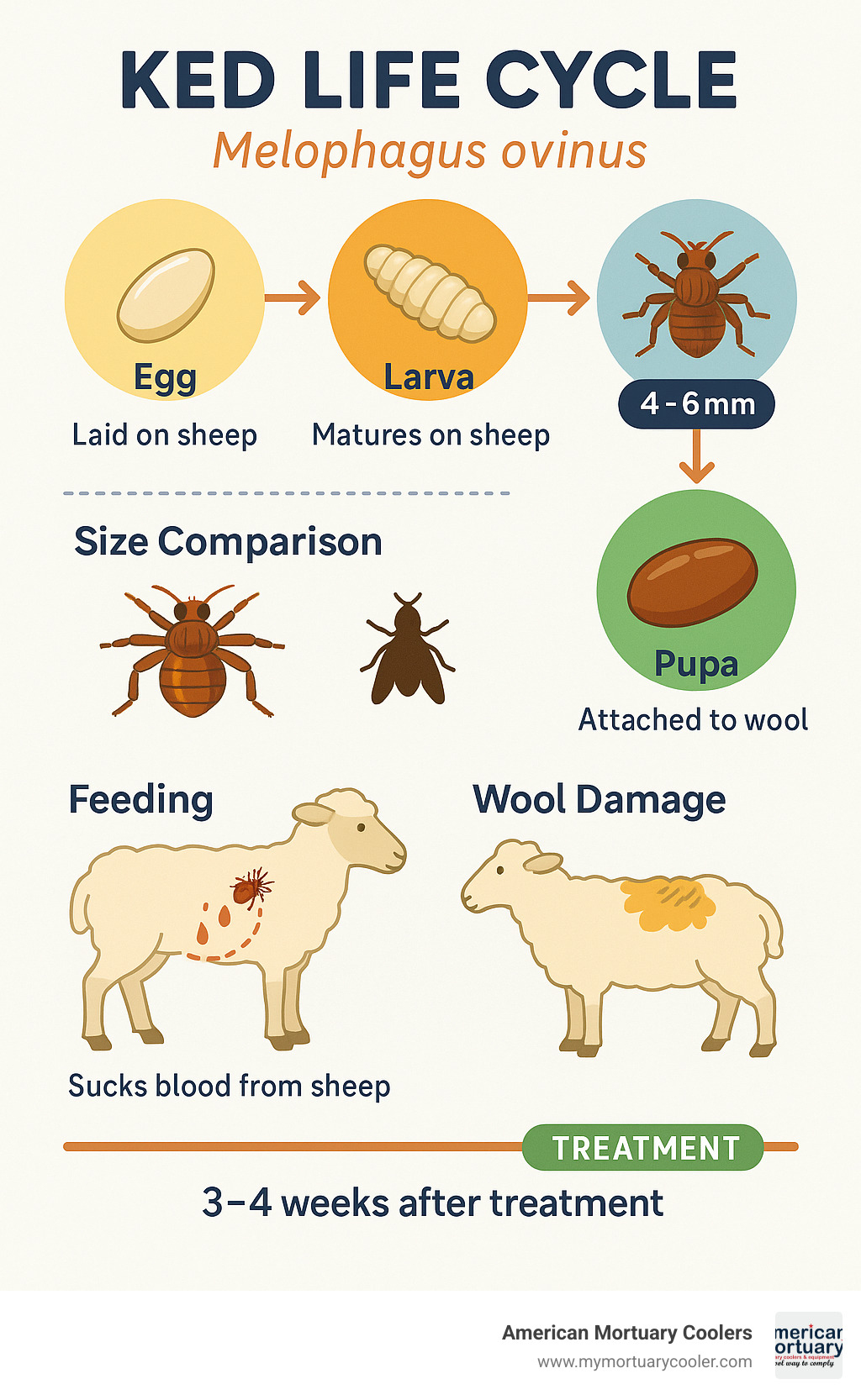
What Is a Ked? – ked meaning Explained
Let's explore what makes a ked tick - or rather, what makes it such a persistent problem for sheep farmers worldwide. The ked meaning in agriculture centers on a remarkable little creature that has mastered the art of being an unwelcome houseguest.
Meet Melophagus ovinus - the sheep ked's formal scientific name. This tiny troublemaker belongs to the Hippoboscidae family, a group of flies that decided regular fly life wasn't challenging enough. Instead, they evolved to become permanent residents on their hosts, earning them the nickname "louse flies."
The word "ked" has quite a journey through history. It first appeared in English around 1560-70, originally spelled as "cade." Linguists have traced its roots back through Proto-Germanic languages, though its ultimate origin remains a bit of a mystery - much like how these parasites seem to mysteriously appear on previously clean flocks.
Interestingly, sheep farmers often call keds "sheep ticks," which creates some confusion. While they behave similarly to ticks by staying attached to their host and feeding on blood, keds are actually flies that have lost their wings over millions of years of evolution.
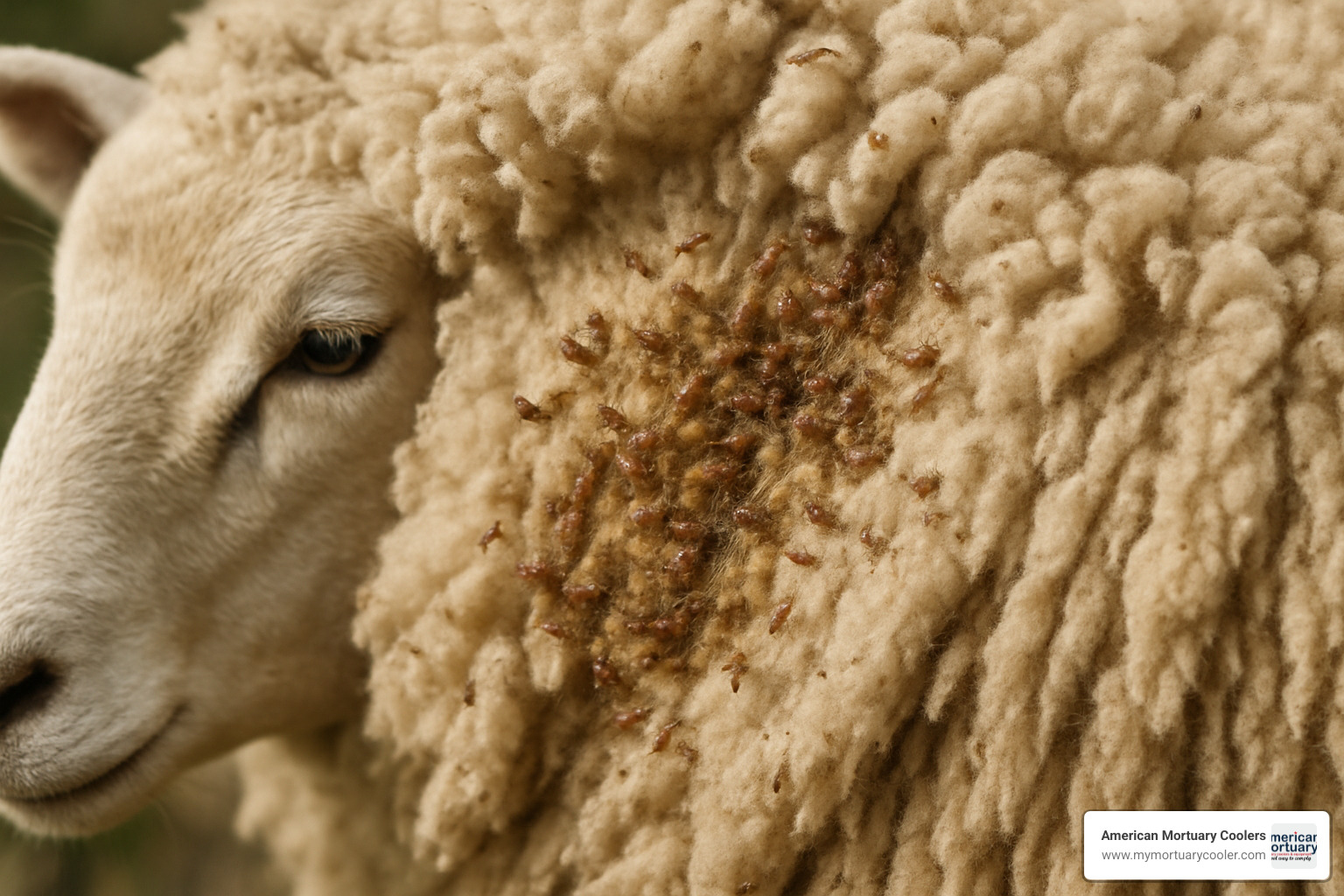
Core ked meaning in English
The essential ked meaning boils down to three defining traits that make these parasites so distinctive and problematic.
First, keds are wingless flies - a fascinating evolutionary adaptation. Unlike their free-flying cousins, adult keds have completely lost their wings because they no longer need them. When your entire life revolves around clinging to a woolly host, wings become more of a hindrance than a help.
Second, they're external parasites that live their entire adult lives on the outside of sheep. This makes them easier to spot than internal parasites, but also means they're constantly irritating the host's skin. They prefer areas with less wool coverage, like the neck, shoulders, and inner legs.
Finally, keds are dedicated bloodsuckers with specialized mouthparts designed for piercing skin and drawing blood. A single ked feeds multiple times per day, and a heavily infested sheep might host hundreds of these tiny vampires simultaneously.
The physical appearance of keds makes them relatively easy to identify. At 4-6 mm long with their distinctive dark red coloration, they stand out against sheep's pale skin. Their flattened, leathery bodies help them steer through wool without getting caught.
ked meaning across languages & history
The three letters "k-e-d" tell completely different stories depending on which language you're speaking. This linguistic diversity shows how the same combination of letters can evolve entirely separate meanings across cultures.
In Danish, "ked" appears almost exclusively in the phrase "Jeg er ked af det," meaning "I'm sorry" or expressing regret. It's fascinating how this relates to being tired or troubled - perhaps not unlike how sheep farmers feel when finding a ked infestation.
Swedish "ked" takes a different path entirely, serving as an archaic term for "chain" (from "kedja"). The connection to restraint or binding feels oddly appropriate when you consider how keds essentially chain themselves to their hosts for life.
The earlier English form "cade" appeared in agricultural texts from the 1500s, showing that sheep farmers have been dealing with - and complaining about - these parasites for centuries. The consistency of the problem across time periods demonstrates just how successful keds have been as parasites.
Proto-Germanic roots suggest the word may have originally described something that "sticks" or "clings," which perfectly captures the ked meaning we understand today. These parasites are masters of attachment, spending their entire adult lives clinging to their woolly hosts through thick and thin.
Anatomy, Life-Cycle & Behavior of Keds
When you see a ked up close, you're looking at nature's perfectly designed parasite. These tiny creatures measure just 4-6 mm long - about the size of a small ant - but their impact on sheep farming is enormous. Their dark red, flattened bodies make them surprisingly visible against a sheep's pale skin, especially around the neck and shoulder areas where they prefer to feed.
What makes keds so successful is their incredible grip. Those strong, curved claws can latch onto individual wool fibers with remarkable tenacity. Meanwhile, their specialized piercing mouthparts work like tiny needles, sliding through skin to reach blood vessels underneath. It's an efficient system that's been perfected over millions of years of evolution.
The ked life cycle breaks all the usual fly rules. While most flies lay eggs that hatch into maggots, female keds do something extraordinary - they produce fully developed larvae that are ready to pupate immediately. Think of it as giving birth to teenagers instead of babies. This clever adaptation means there's no vulnerable larval stage crawling around in the dirt where predators could find them.
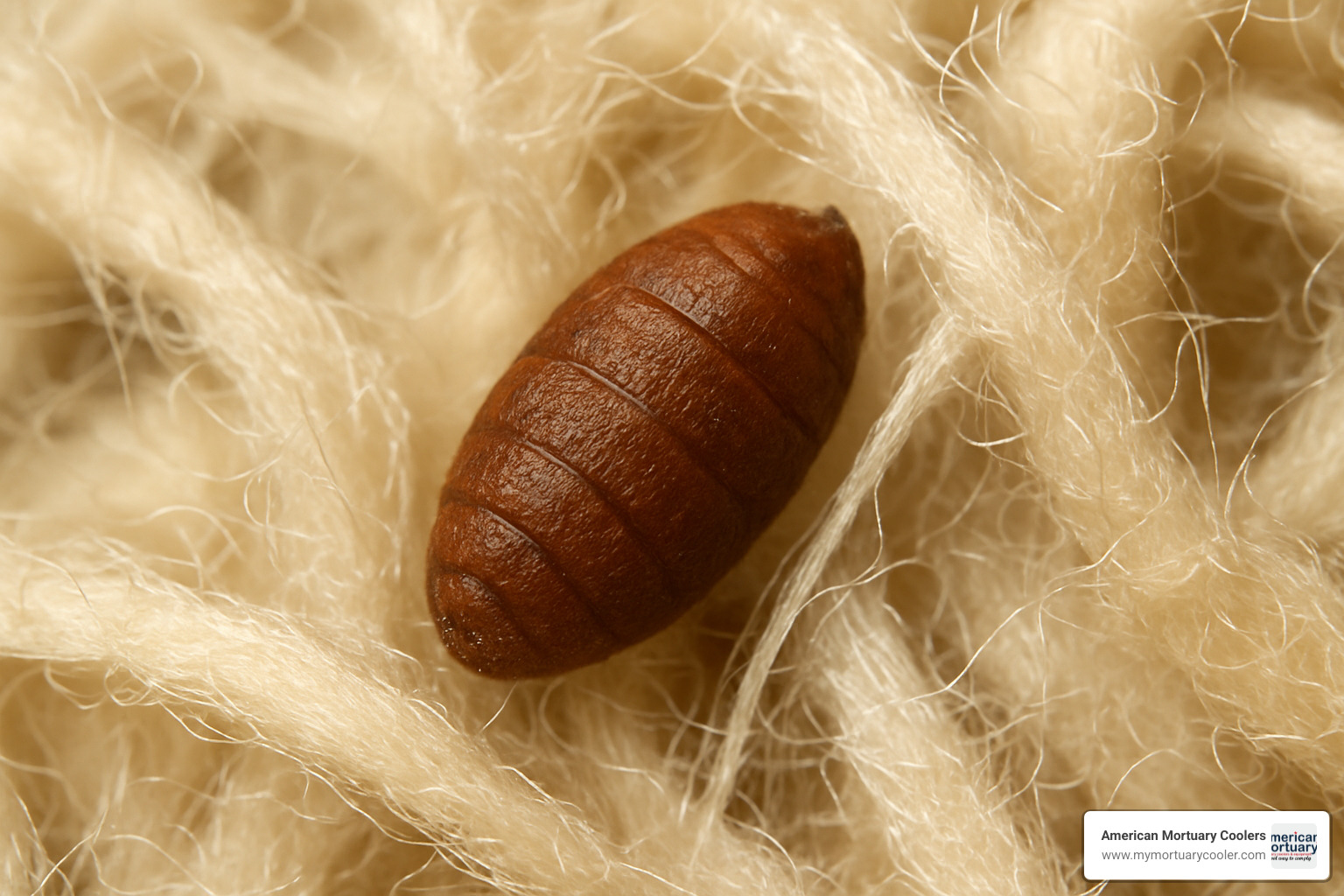
The pupation happens right in the wool, creating small, brown cocoons that stick to individual fibers. These pupae spend about 3-4 weeks developing before emerging as fully grown adults. During this time, they're completely dependent on staying attached to their host - if they fall off, they die.
Seasonal peaks tell an interesting story about ked behavior. These parasites thrive during cooler months when sheep naturally grow thicker, warmer fleeces. The dense wool creates perfect conditions - it's like a cozy apartment complex with built-in climate control and room service. As temperatures drop and wool grows longer, ked populations can explode from just a few individuals to hundreds per animal.
For more detailed scientific information about sheep ked biology, you can explore scientific research on sheep ked which covers their complete taxonomy and ecological role.
ked meaning for biologists – parasite ecology
From a scientific perspective, the ked meaning represents one of parasitology's most fascinating success stories. These creatures are obligate parasites, which means they literally cannot exist without their sheep hosts. It's a relationship so complete that keds have essentially given up their independence for guaranteed meals and housing.
Host specificity is another remarkable feature. While many parasites can jump between different animal species, keds have evolved to be sheep specialists. They're so adapted to sheep biology that they struggle to survive on other animals, even closely related ones like goats. This specialization has driven some incredible evolutionary changes over time.
Perhaps most importantly for farmers, keds serve as vectors for trypanosomiasis - a serious protozoan disease that can weaken entire flocks. When a ked feeds on an infected sheep, it picks up the disease organisms in the blood. Later, when that same ked feeds on a healthy sheep, it can transmit the infection through its saliva or contaminated mouthparts.
This disease transmission capability transforms keds from simple nuisance parasites into legitimate health threats. Understanding this parasite ecology helps explain why effective ked control isn't just about wool quality - it's about protecting overall flock health and preventing disease outbreaks that could devastate a farming operation.
Impact on Sheep & Other Livestock
When we talk about the ked meaning in practical terms, we're really talking about money - and lots of it walking out of farmers' pockets. These tiny parasites pack a serious financial punch that goes way beyond what their small size might suggest.
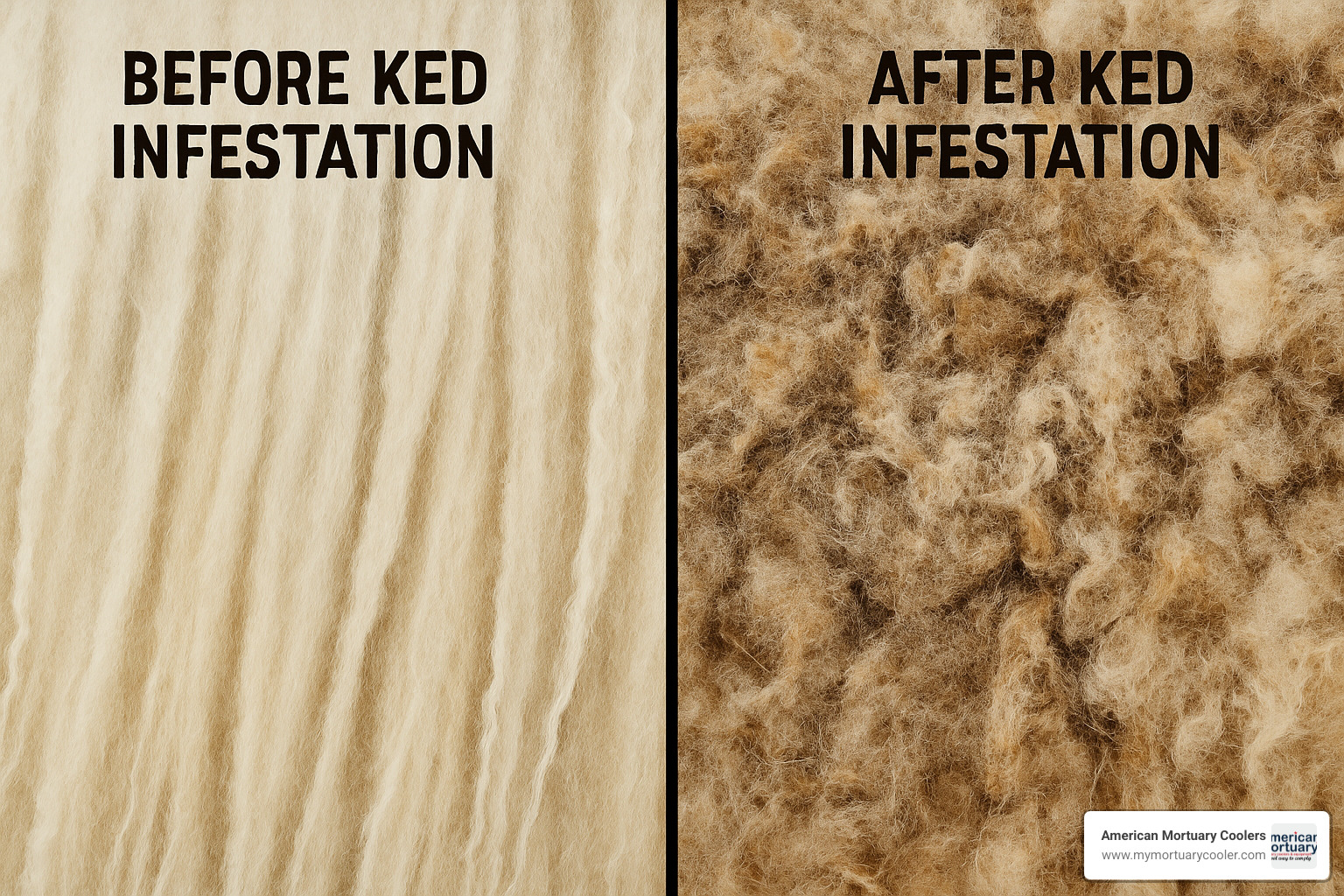
The most heartbreaking sight for any sheep farmer is watching their flock's beautiful fleece turn into a tangled, damaged mess. Keds drive sheep absolutely crazy with itching, causing them to scratch and rub against anything they can find - fence posts, barn walls, even each other. This desperate scratching behavior creates a cascade of wool problems that hit farmers right in the wallet.
Broken wool fibers become the norm rather than the exception, dramatically reducing fleece length and market value. Felted patches develop where the wool becomes so matted it's essentially unusable for quality textile production. Add in the stained fleece from ked droppings and blood spots, and you've got wool that might be rejected entirely by buyers.
But the damage doesn't stop at cosmetics. Those constant scratching wounds become entry points for secondary infections, turning a parasite problem into a veterinary emergency that requires immediate attention and expensive treatment.
While sheep bear the brunt of ked problems, these parasites aren't picky when food gets scarce. Goats and occasionally deer can become unwilling hosts, though sheep remain their five-star hotel of choice. From Australia's vast sheep stations to Scotland's misty highlands, ked infestations plague wool-producing regions across the globe.
Health complications caused by keds
The ked meaning for animal welfare goes much deeper than surface irritation. These parasites create a perfect storm of health problems that can seriously compromise an animal's wellbeing.
Skin irritation starts the moment keds begin their relentless feeding routine. It's not just the blood loss - though that's part of it. The mechanical irritation from keds constantly moving through wool, combined with allergic reactions to their saliva, creates an itch so intense that sheep will literally injure themselves trying to get relief.
Anemia becomes a real threat when infestations get out of hand. One ked doesn't drink much blood, but imagine hundreds of them having dinner on the same sheep, day after day. Young lambs and already-weakened animals are especially vulnerable to this cumulative blood loss.
The most serious concern involves disease transmission. Keds act as living syringes, picking up sheep trypanosomiasis (caused by Trypanosoma melophagium) from one animal and injecting it into the next. This protozoan disease brings its own set of problems - fever, anemia, and reduced productivity that can ripple through an entire flock.
Economic losses & management costs
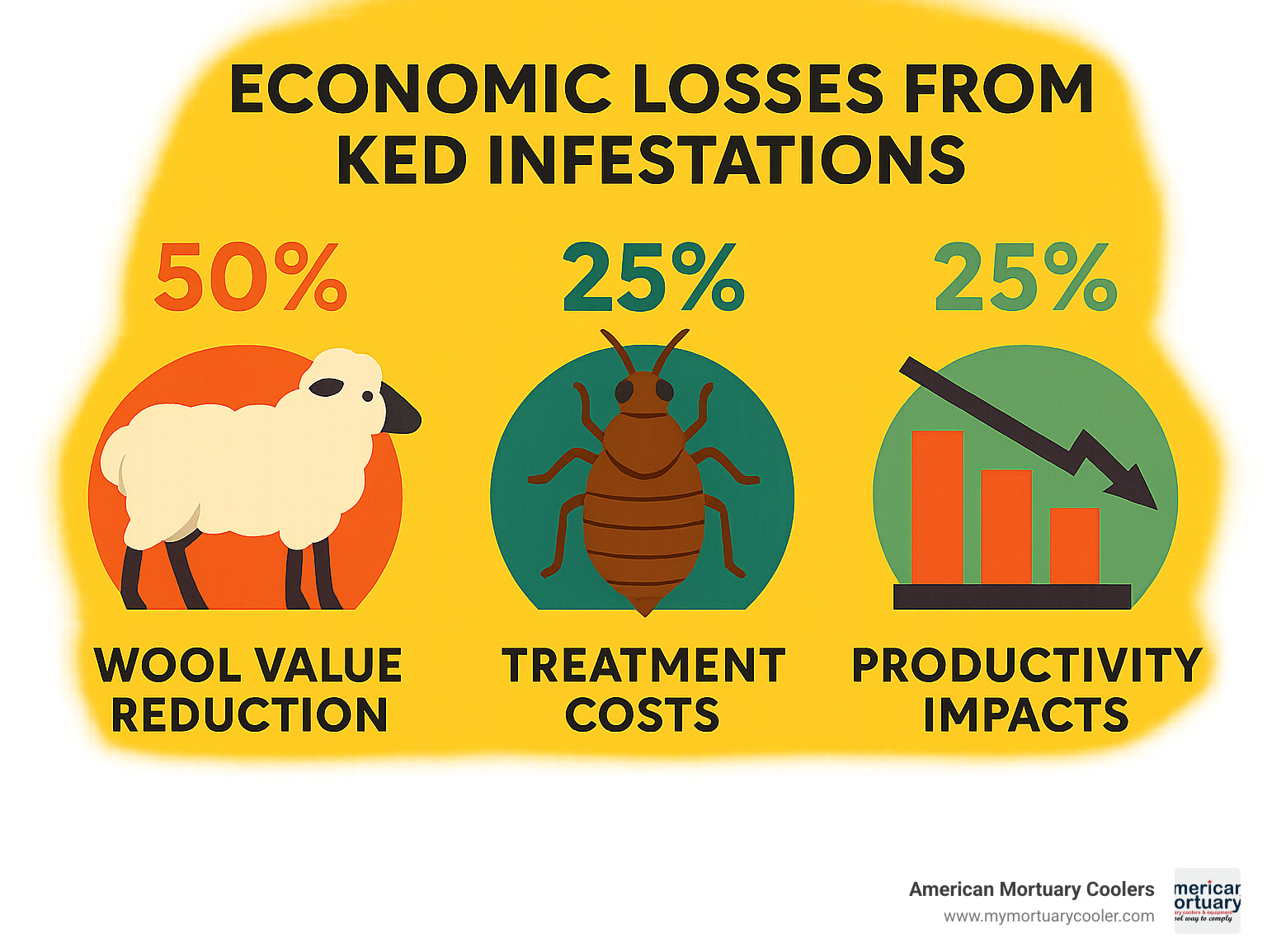
The financial reality of ked infestations hits farmers from multiple directions, creating a web of costs that can strangle farm profitability. Direct costs are the obvious ones - reduced fleece value due to damage and staining, treatment expenses for insecticides and veterinary care, plus the labor costs for all that additional animal handling and treatment time.
But the indirect costs often hurt even more because they're harder to see coming. Infested animals don't gain weight like they should, breeding performance drops, and in severe cases, mortality rates climb. Market penalties for lower-grade wool can turn what should have been a profitable season into a break-even struggle.
Industry experts estimate that ked infestations can slash fleece value by 15-30% in affected flocks. For commercial sheep operations running on tight margins, that kind of loss can mean the difference between staying in business and calling it quits.
At American Mortuary Coolers, we understand how biological specimens - whether from healthy or compromised animals - require proper preservation and handling. Our experience with temperature-controlled storage solutions has taught us that prevention is always more cost-effective than dealing with problems after they've taken hold.
Control, Treatment & Best-Practice Prevention
Successfully managing ked infestations requires a thoughtful approach that combines the right treatments with smart timing. Think of it as outsmarting these persistent little parasites by hitting them when they're most vulnerable.
The secret weapon in ked control is shearing timing. When you remove that protective wool blanket, keds suddenly find themselves exposed and defenseless. This creates the perfect window for treatment because chemical applications can actually reach their targets instead of getting trapped in thick fleece.
Pyrethroid dips remain the gold standard for immediate results. These treatments knock down adult keds quickly while providing weeks of residual protection. For farmers preferring injectable options, ivermectin works systemically - keds literally poison themselves when they feed on treated sheep's blood.
Smaller operations often prefer pour-on formulations for their convenience. While slightly less effective than dips, they're much easier to apply and still provide solid control when used correctly.
Strategic flock isolation prevents the frustrating cycle of reinfection. There's nothing worse than successfully treating your sheep only to have them pick up new keds from untreated neighbors or recently purchased animals.
Modern Integrated Pest Management approaches combine multiple strategies for long-term success. This means using chemical treatments alongside management practices like proper nutrition (healthy sheep resist parasites better) and strategic pasture rotation.
Exciting vaccination research is showing promise for future ked control. While not yet commercially available, experimental vaccines targeting ked feeding behavior could revolutionize how we approach these parasites.
For professional guidance on livestock parasite management and specialized equipment needs, explore our comprehensive guide to KED in EMS applications and find our full range of specialized services.
Step-by-step ked eradication plan
Creating a successful ked meaning eradication strategy requires systematic execution and patience. The process isn't complicated, but timing and follow-through make all the difference.
Start with regular monitoring by checking your sheep's necks and forelimbs weekly during peak ked season. These areas show infestations first because keds prefer the thinner skin and better blood access.
Strategic treatment timing centers around shearing. Plan your chemical applications for immediately after wool removal when keds are most exposed and vulnerable. This timing maximizes treatment effectiveness while minimizing chemical waste.
Choose your treatment method based on flock size and facilities. Apply the chosen treatment following label directions exactly - more isn't better and can create resistance problems down the road.
The crucial 14-day follow-up treatment targets newly emerged adults from pupae that survived the first application. Skip this step, and you'll watch your ked population bounce right back to pre-treatment levels.
Flock isolation during the vulnerable post-treatment period prevents reinfection from outside sources. This means keeping treated sheep separated from untreated animals for at least three weeks after the final treatment.
Finally, document everything - treatment dates, products used, and results observed. This record-keeping helps refine your approach and provides valuable data for veterinary consultations if problems persist.
Other Meanings of "Ked" & the KED Acronym
The ked meaning extends far beyond sheep parasites into some fascinating territory. In our work at American Mortuary Coolers, we've encountered this three-letter combination in medical settings, emergency response, and even everyday conversation across different cultures.
The most important alternative ked meaning appears in emergency medicine as the Kendrick Extrication Device (KED). This life-saving piece of equipment helps paramedics and EMTs safely remove accident victims from vehicles while protecting their spine. For anyone working in emergency services or funeral care, understanding this device is crucial - which is why we've created a detailed Beginners Guide to KED in EMS: What You Need to Know.
ked meaning in emergency medicine (KED)
When emergency responders talk about ked meaning, they're usually referring to the Kendrick Extrication Device - a semi-rigid spinal immobilizer that's been saving lives since 1978. Richard Kendrick invented this ingenious device to solve a critical problem: how do you safely extract someone from a car accident without causing spinal cord damage?
The KED looks like a specialized jacket with wooden or polymer support bars running vertically to provide rigid structure. A nylon jacket distributes pressure evenly across the patient's torso, while multiple straps secure everything in place. The device uses a specific strap sequence that EMTs memorize through training.
Emergency medical technicians follow a precise application order: middle torso strap first for initial stability, then bottom torso strap, followed by leg straps, head straps, and finally the top torso strap for final securing. Many EMTs use the mnemonic "My Baby Looks Hot Tonight" to remember this critical sequence.
Cultural & lexical offshoots
The ked meaning takes some interesting turns when you explore different languages and cultures. In Czech, "kloš" means lampshade - completely unrelated to our sheep parasite. Finnish speakers use "täikärpänen" for louse fly, which actually describes the same creature but sounds nothing like "ked."
"Keda" appears as a personal name with Hebrew origins meaning "to be" or "to stay" - a beautiful concept that connects to permanence and presence. Some regions use "ked" in informal expressions, though these slang uses vary widely by location.
Word game enthusiasts appreciate that "ked" scores 8 points in Scrabble, making it a handy three-letter word when you're stuck with difficult letters. The term's versatility across contexts - from parasitology to emergency medicine to everyday language - shows how words evolve and adapt across different fields and cultures.
At American Mortuary Coolers, we find these linguistic connections fascinating because they remind us how terminology crosses boundaries between agriculture, medicine, and funeral care. Understanding these various meanings helps us communicate more effectively with professionals across different industries who might encounter biological specimens or medical terminology in their work.
Frequently Asked Questions about ked meaning
What animal is most commonly associated with the term "ked"?
When people talk about ked meaning, they're almost always referring to sheep. The sheep ked (Melophagus ovinus) has spent thousands of years evolving alongside domestic sheep, creating one of nature's most specialized host-parasite relationships.
While these wingless flies can occasionally bother goats or even wild deer, sheep remain their absolute favorite. It's like they've developed a taste preference that's impossible to change. This explains why every sheep farmer from New Zealand to Scotland has to become an expert in ked biology whether they want to or not.
The connection is so strong that the ked meaning in agriculture is essentially synonymous with sheep farming challenges. You simply can't raise healthy sheep without understanding how to manage these persistent little parasites.
How does the sheep ked differ from ticks or lice?
Despite being called "sheep ticks" by many farmers, keds are actually quite different creatures. This naming confusion has puzzled people for generations, but the differences become clear once you know what to look for.
Keds are flies, not ticks. While ticks are eight-legged arachnids related to spiders, keds are six-legged insects that happen to have lost their wings. Think of them as flies that decided to give up flying in exchange for a permanent home in sheep's wool.
The size difference is noticeable too. Keds measure 4-6 mm long - significantly larger than most lice species that might infest sheep. Their robust, dark red bodies are built for pushing through thick wool fibers, while lice tend to be smaller and more delicate.
Behavioral differences set them apart as well. Keds live their entire adult lives on one sheep, feeding exclusively on blood. Ticks often move between hosts, and some lice species actually prefer eating dead skin cells rather than blood. It's like comparing a permanent house guest to a occasional visitor.
What's the best time of year to treat flocks for keds?
Timing your ked treatments right can mean the difference between success and frustration. The golden rule is simple: treat immediately after shearing for maximum effectiveness.
Post-shearing treatment works best because the keds suddenly find themselves exposed and vulnerable. Without their cozy wool hiding places, they're sitting ducks for whatever treatment you choose to use. It's like removing someone's winter coat in a snowstorm - they become much easier to deal with.
Spring treatments make particular sense for most flocks. You're protecting young lambs during their most vulnerable months, and you're catching ked populations before they explode during the warmer weather. Many experienced shepherds swear by this timing.
The follow-up treatment is crucial and often forgotten. Plan to retreat your flock exactly 14 days after the initial treatment. This catches any keds that were in the pupal stage during your first round - they're tough little survivors, but this two-punch approach usually does the trick.
Avoid treating during harsh winter weather when sheep are already stressed by cold. These animals have enough to deal with without adding chemical treatments to their troubles.
For those working in emergency medical services or funeral care who need equipment information, our comprehensive guide to ked EMT mattress cots, funeral & removal gurneys covers the medical equipment side of ked meaning in professional settings.
Conclusion
The ked meaning journey we've taken together shows how one small word connects sheep farms, emergency rooms, and everything in between. Whether you're dealing with those pesky 4-6 mm parasites wreaking havoc on wool or learning about the Kendrick Extrication Device saving lives at accident scenes, understanding these terms makes a real difference in professional settings.
Here at American Mortuary Coolers, we've seen how biological knowledge intersects with practical needs. Our work across Tennessee and throughout the contiguous 48 states has taught us that proper specimen handling starts with understanding the science behind what we're preserving. When veterinary specimens arrive from ked-infested flocks or research samples need temperature-controlled storage, that foundational knowledge matters.
We're genuinely proud to support education on bio-safety from pasture to mortuary. It's not just about selling coolers - though our custom mortuary equipment does provide the reliable refrigeration solutions needed to safeguard both animal and human specimens. It's about building a community of professionals who understand the connections between agricultural health, human medicine, and scientific advancement.
The ked meaning story spans centuries, from those first recorded uses in the 1560s to today's emergency medical protocols. What strikes us most is how the challenges remain surprisingly consistent. Farmers still battle the same parasites their ancestors did, while emergency responders continue refining techniques to save lives more effectively.
Whether you're managing livestock health, responding to medical emergencies, or preserving biological specimens for research, the underlying principle stays the same: knowledge paired with proper equipment makes all the difference. Our custom mortuary coolers represent that philosophy - combining scientific understanding with practical engineering to serve professionals nationwide.
For more insights into biological terminology, equipment selection, and industry best practices, we invite you to explore our full knowledge hub. We're constantly adding new educational resources because we believe that sharing knowledge strengthens our entire community of funeral professionals, medical personnel, and researchers.


















